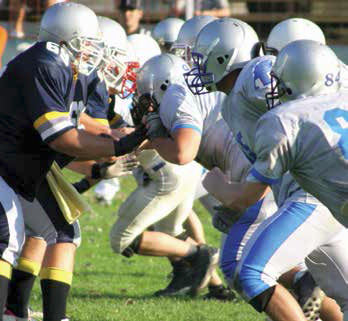Athletic Mouthguards
Mouthguards
To avoid injuries to your mouth while you’re playing sports, talk to your dentist about getting an athletic mouthguard made just for you.
What is a mouthguard?
A mouthguard is a flexible appliance that is worn during athletic and recreational activities to prevent injuries to your mouth and face, such as split lips, broken teeth, and jaw fractures.
When should I wear a mouthguard?
It is advisable to wear a mouthguard any time there is a strong chance of your head making contact with other participants or hard surfaces. Mouthguards should be worn when participating in activities such as basketball, softball, football, wrestling, soccer, lacrosse, rugby, hockey, martial arts, and skateboarding.
What are the different types of mouthguards?
There are several types of mouthguards, including the following:
- Stock mouthguards: The least expensive option is a readymade stock item, which offers the least protection since little can be done to adjust its fit. This type of mouthguard—which is available over-the-counter—requires the user to close his or her jaw to hold it in place; as a result, it may interfere with
speech and breathing. It also may lead to soreness of the jaw muscles. A stock mouthguard is not considered an acceptable device for facial protection. - Mouth-formed mouthguards: There are two types of mouth-formed mouthguards, both of which are available over-the-counter. The first is a shell-liner mouthguard, which is made from an acrylic material that is poured into an outer shell, where it forms a lining. When placed in an athlete’s mouth, the lining material molds to the teeth and is allowed to set. The second type is a thermoplastic, or “boil-and-bite,” mouthguard. This type of mouthguard is softened in hot water, placed in the mouth, and shaped around the teeth using a finger or tongue, and sometimes biting pressure. This type of mouthguard can provide some degree of protection, but it can be bulky and have a loose fit.
- Custom-made mouthguards: When it comes to injury prevention, a custom-made mouthguard is your best option. This type of mouthguard, which is made by your dentist, offers the best protection, fit, and comfort level because it is made from a model of your teeth.
How should I care for my mouthguard?
To keep your mouthguard in good condition, follow these steps:
- After each use, brush your mouthguard with a toothbrush and cool (not hot) water.
- Keep your mouthguard in a well-ventilated plastic storage box when you’re not using it. Your dentist will provide you with a case.
- Don’t leave your mouthguard in direct sunlight or in a hot car; heat can melt the device, altering the way it fits in your mouth—resulting in less protection.
- Bring your mouthguard with you when you see your dentist for your regular checkups. Your dentist can give it a thorough cleaning and check its structure and fit.
- Call your dentist if you have any concerns about your mouthguard.
For more information about mouthguards, talk to your general dentist.
KnowYourTeeth.com
Brought to you by the Academy of General Dentistry (AGD), this website answers important dental health questions, offers the latest information on current treatments,
provides tips for first-rate oral hygiene, and helps visitors find highly qualified general dentists near where they live.
The AGD is a member of the Partnership for Healthy Mouths, Healthy Lives, a first-of-its-kind national dental coalition composed of 37 leading dental health organizations. Look for more information about the Kids’ Healthy Mouths campaign at www.2min2x.org.
Published with permission by the Academy of General Dentistry.
© Copyright 2014 by the Academy of General Dentistry. All rights reserved.
1 Comments
Leave a Comment
You must be logged in to post a comment.

[…] post Athletic Mouthguards appeared first on Quali-dent – Your Miramichi Dental […]